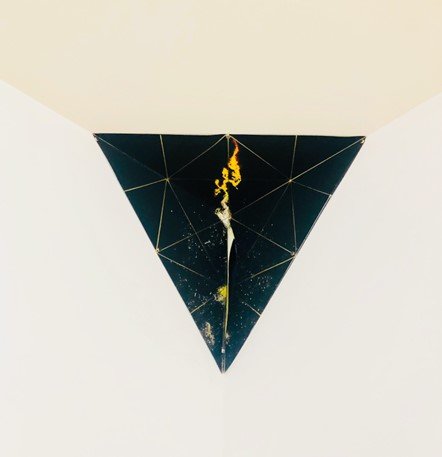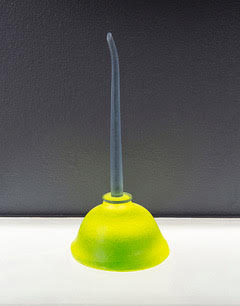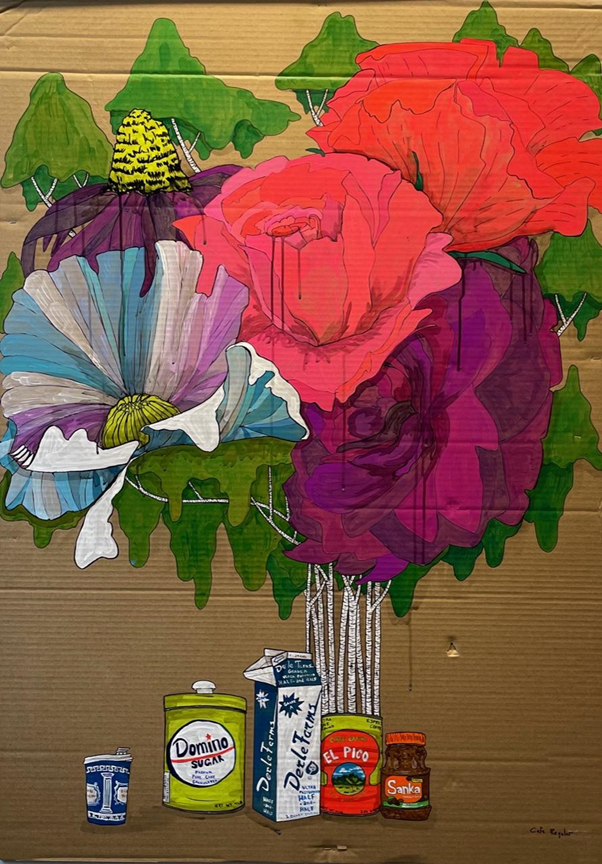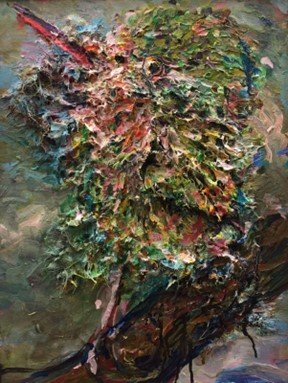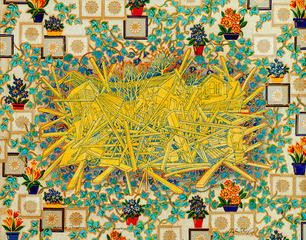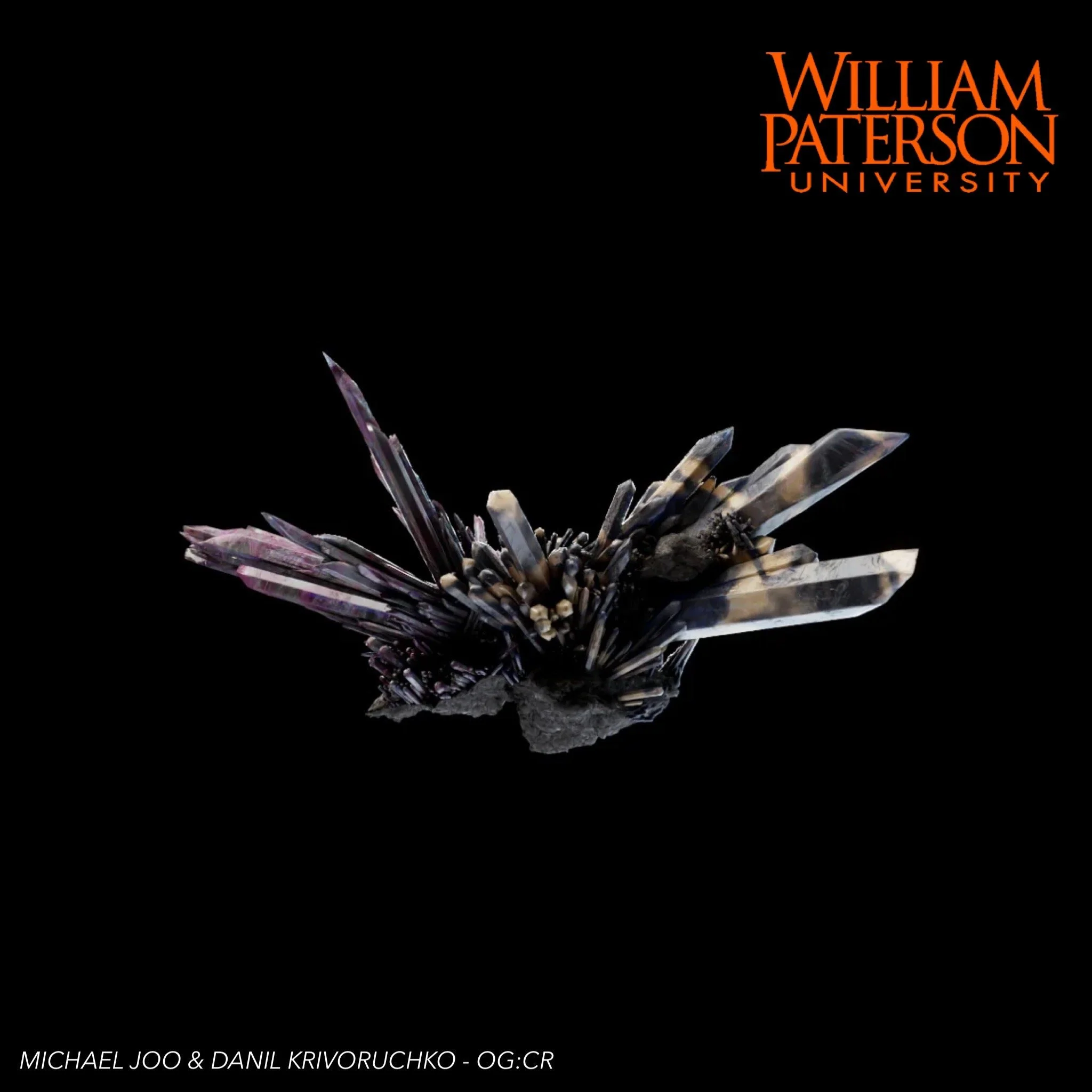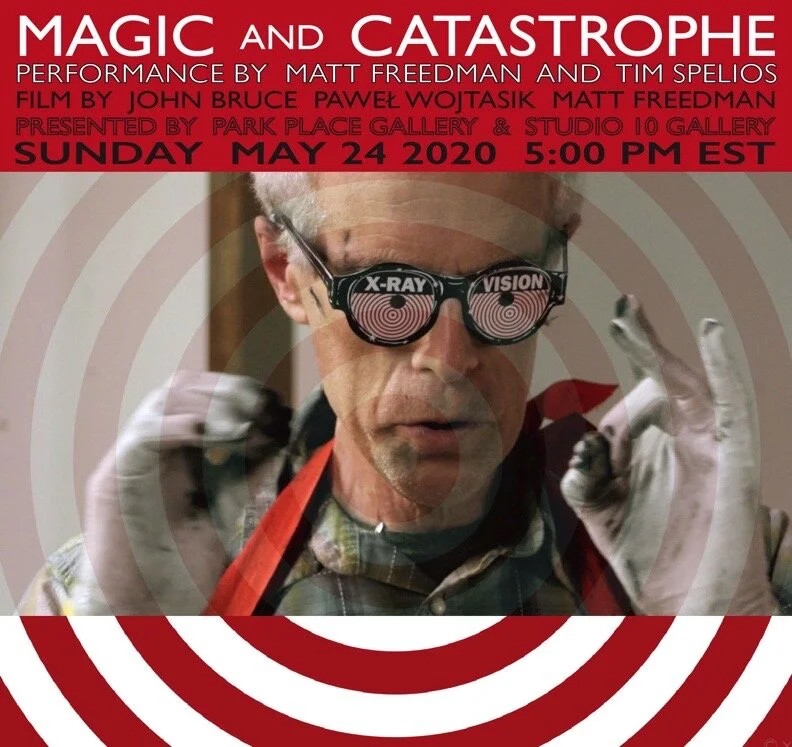The Judson Memorial Church was founded in 1888 with the support of my great-great grandfather John D. Rockefeller Sr., and it immediately became a source of inspiration as well as much more palpable assistance to the local Greenwich Village population, many of whom were recent immigrants: it offered a free medical clinic as well as a salve for their souls! As a work of art and architecture, a gesamtkunstwerk, it brought together the talents of the architect Stanford White, and artists John La Farge; who created the magnificent stained glass windows, and Augustus St. Gaudens; who designed the high relief in the baptistery (executed by Herbert Adams). With his new installation of recent sculpture, some created specifically for the space, William Corwin is interpreting the idea of the altar, and ecclesiastical decoration for the 21st century in a vibrant and thriving activist spiritual atmosphere.
An emphasis on location and a keen eye for aesthetics were a hallmark of John D. Rockefeller Senior’s engagement with religion: the Rockefeller Memorial Chapel at the University of Chicago was centrally-sited for the optimal emanation of spiritual enlightenment for the student population, and the family chapel, the Union Church of Pocantico Hills, features extraordinary stained glass by Matisse and Chagall. Stanford White’s design for Judson is modeled on the high renaissance, and the sky-blue and airy barrel-vaults of the assembly hall have fostered remarkable innovations in dance, theater and performance, in particular the Judson Dance Theater, whose artistic output was recently chronicled this past fall and Winter in the exhibition Judson Dance Theater: The work is Never Done at the MoMA.
The Judson space has never been a static one, and Corwin’s pieces reference processional objects and liturgical tools and furniture that would have been handled and physically venerated: practical sculpture for practical magic. They draw on a fluidity of ideas and history as well, finding inspiration in symbols and representations of deities and natural forces from ancient Sumerian, Egyptian and Babylonian sculpture, as well as contemporary Judeo-Christian, Islamic and Hindu imagery. Many of his archaic examples are found specifically in the Oriental Institute of the University of Chicago, a museum also founded by my family. It will be exciting to see Corwin’s art activated by the ideas and enthusiasm of the Judson congregation that uses the space for a variety of wonderful purposes. His objects will absorb the passion of the Lenten services, Ash Wednesday, and Easter, of course, as well as the vital social programs of the church.
Charles Rockefeller
Welcome to Lent 2019 at Judson Memorial Church. This one will be our 127th or so, depending on how you count the time when we first made spiritual sounds in the stunning building we call home. Sunday mornings at 11, we get the light that John LaFarge curated for us, filtered through stained-glass colors that are never the same, Sunday after Sunday they with the sun. Our weekly Lenten services are not as long-standing as our Sundays, given the rise and fall in the congregation's observance of Lent. These services have made a come-back at Judson in recent years. In the evenings the vaulted space speaks to the Spirit more than the light -- you want to break out singing -maybe anti-subway songs, Or On A Clear Day You Can See Forever. Once uncoiled and uncrowded, you get lighter. You lose weight. You let the plenty of the space make plenty out of you, even if you are observing the darker season of Lent, the time when you are supposed to give something up. We often give up sadness in Lent in order to be lit or made spacious again. Lots of people say they are burnt out today. I argue that most of us are not even lit.
William Corwin's sculptures will be with us Sundays, Wednesdays and Thursdays during Lent, lighting our ways and days and making us spacious people again and again.
Reverend Donna Schaper
Karen Wilkin, “At the Galleries,” The Hudson Review, Winter 2019:
William Corwin’s sculptures, in “The Old Gods,” at Geary Contemporary, offered another take on the past, this time with archaeological overtones. The widely-traveled Corwin, trained as an architect and deeply knowledgeable about ancient history and scientific exploration of the ancient world, presented an installation that simultaneouslty evoked an archeological dig, a miniature ancient site, and a display of retrieved artifacts, albeit artifacts made of such unlikely materials—for the past—as Hydrocal. Corwin plays fast and loose with ancient cultures and with scale, constructing small objects, now chunky, now delicate, that shift between past and present, while seeming both intended to be the size they are and to refer to larger structures, such as monumental sculptures or architecture. A group of these, arrayed like the miniature ruins of an Egyptian temple on an expanse of sand, filled the center of the room, their associations with buildings and large-scale figures subverted by a scattering of ambiguous, narrow, curved forms, like the ribs of a giant creature or perhaps part of a shattered solar boat.
The more time we spent with Corwin’s multivalent objects, the more associations they provoked, but we also became increasingly aware of their specific properties. A repeated vertical form, for example, apparently distilled from a striding Egyptian figure, suggested that it had been built by stacking chunks of something like Styrofoam before being cast in pale Hydrocal. Wheels, hung on the wall, read at a distance like encrusted antique bronzes, parts of ancient chariots, perhaps, but revealed themselves, on closer acquaintance, as more insubstantial. The fairly large, free-standing Teeth (2018), a vertical stack of blocky forms, sand-cast in plaster, punctuated with wood, and lashed together with rope, hinted at another side of Corwin. Teeth provoked thoughts about dinosaurs and natural history museums, suggesting the remains of some giant, extinct creature, packaged, perhaps, for transportation from where they were excavated. But it was principally a casually constructed tower, articulated in ways that kept us noting its idiosyncrasies and enjoying the way each block revealed itself as different from the others, while remaining part of the stack. Such multiple readings distinguish Corwin’s work. We begin by trying to interpret his mysterious objects, finding clues in the many associations they provoke and sometimes in their titles. We give ourselves over to the narratives Corwin hints at, but we are ultimately convinced by formal invention. I have limited tolerance for work that requires verbal explication to make its worth felt. Corwin’s thoughtful, informed, and informative comments are very enriching, but in the end, his work stands on its own. Wishing to know more without having that wish fully satisfied simply makes us look harder.



